After having a good look at the motor section of this drive, I was keen to have a closer look at the rest of the drive. Avigo gave the nod for me to strip his drive down for a closer look 8)
So firstly the rotor and primary helical gear. Looks to have 16 poles. I like the fact that the primary gear is steel as opposed to the Bosch which is a type of plastic.
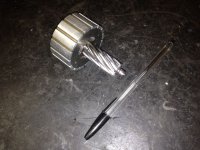
The secondary gear bearing housing
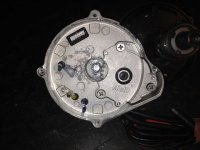
The secondary gear housing removed revealing good sized sealed support bearing. You can also see the locking collars that hold the bottom bracket shaft in the housing
View attachment 11
The helically cut secondary gear is nice and wide to handle plenty of load and has an internal sprag or one way bearing press fitted inside. This allows the secondary reduction to free wheel under certain operating conditions.

This shot shows the 2 support bearings for the primary and secondary gears

Final drive gears exposed. Both these gear are steel but helically cut to keep noise down. You can also see PAS sensor plug and motor phase cables
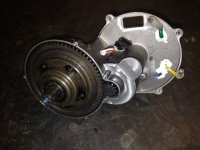
Controller is fully potted. Great for weather proofing. Not so good for repairs.
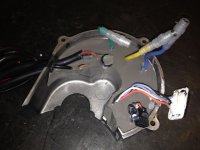
This shot shows the final gear removed together with the bottom bracket shaft and associated bearing. The PAS sensor is also visible once the final gear is removed. The locking collars and one of the thrust bearings are also shown.

The shaft and final gear comes out as an assembly after removing 2 locking collars on the non drive end of the bottom bracket shaft. The 2 bearing surfaces for the one way bearings can also be seen on the shaft.
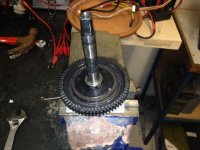
A magnetic ring is keyed to the shaft for PAS sensing. This is held in place with a "C" clip
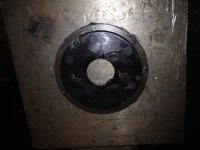
With the PAS sensor ring removed, the rear bearing support for the bottom bracket shaft is exposed.
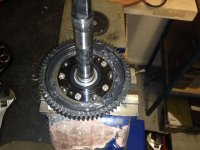
Once removed, the main free wheel can be seen. The free wheel uses a 3 paw system for drive engagement.
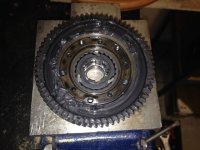
Final 2 shots show the bottom bracket shaft and rear bearing housing.
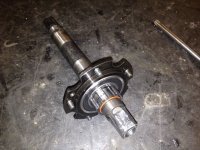

The bottom bracket shaft, although square taper should be nice and strong considering the amount of bearing support it has. On the free wheel section, it has sizable bearings on both sides with the outer bearing being nice and close to the start of the square taper. The shaft is then supported across its length with 2 sprag or one way bearings. Thrust bearings are fitted at both ends of the shaft to control lateral movement. As the shaft has the one way bearings driving directly against it, we can presume the shaft is case hardened and should resist any bending from our more adventurous riders.
So the drive has a three different areas where it can free wheel from. The chain ring, the primary shaft, and the secondary shaft.
All gears are helical cut and look like they should handle a fair bit of abuse.
All in all, this is a nicely engineered piece of kit.














